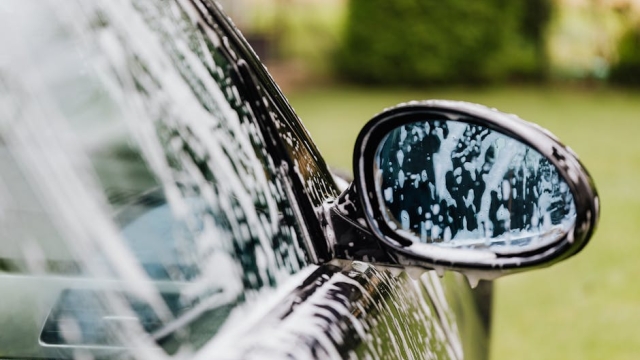How to Select Conveyor Belts for Extreme Conditions
![]()
When it comes to industries that operate under extreme conditions, the selection of the right conveyor belt is crucial for ensuring efficiency and longevity. Whether you are working with heavy materials in mining, transporting goods in food processing, or managing loading docks in logistics, the durability and performance of rubber conveyor belts, PVC conveyor belts, and rubber drive belts play a significant role in the success of any operation. Understanding the specific requirements of your application can help you choose the best solution to handle the challenges that extreme environments present.
The design, development, and production of conveyor belts for harsh conditions require a keen focus on material selection, thickness, and resistance to elements such as heat, chemicals, and abrasion. Each type of belt offers its own set of advantages. Rubber conveyor belts are renowned for their strength and resilience, while PVC conveyor belts provide versatility and resistance to moisture. Meanwhile, rubber drive belts are designed for power transmission and flexibility. By exploring these options and their respective applications, you can make an informed decision that will enhance productivity and reduce downtime in your operations.
Material Selection for Extreme Environments
When selecting conveyor belts for extreme environments, the choice of material is crucial to ensure durability and performance. Rubber conveyor belts are known for their elasticity and resistance to wear, making them ideal for applications with heavy loads and abrasive materials. The formulation of rubber can be tailored to enhance its resistance to temperature fluctuations, ozone, and chemicals, allowing for a more robust performance in harsh conditions.
In certain applications, PVC conveyor belts may be preferred due to their versatility and lightweight nature. PVC materials provide good resistance to oils and grease, making them suitable for food processing and other industries where contamination must be minimized. Additionally, PVC belts can be designed with various surface textures to improve grip and transportation efficiency, which is vital in environments that demand high levels of safety and reliability.
Rubber drive belts also play an important role in extreme environments, particularly in applications requiring high torque and power transmission. The strength and flexibility of rubber allow these belts to handle intense conditions without compromising performance. Selecting the right type of rubber compound is essential, as it can enhance the drive belts’ resistance to heat and mechanical stress, ensuring that they can operate efficiently even under challenging circumstances.
Design Considerations for Durability
When selecting conveyor belts for extreme conditions, durability is a primary consideration in the design process. The materials and construction of rubber conveyor belts, PVC conveyor belts, and rubber drive belts must be tailored to withstand harsh environments. For instance, belts exposed to extreme temperatures, heavy loads, or abrasive materials require specific formulations that enhance their resistance to wear and deterioration. The right combination of materials ensures that these belts maintain their integrity and performance, reducing the likelihood of frequent replacements.
Another crucial factor in the design of durable conveyor belts is the thickness and profile of the belts. A thicker belt may offer better protection against cuts and punctures, while special profiles can improve grip and reduce slippage under heavy loads. Additionally, the use of reinforcement materials, such as steel cable or polyester, can add significant strength to the belt, ensuring it withstands tensile stress and elongation during operation. Designers should also consider the operating conditions, including humidity and exposure to chemicals, which can affect belt performance over time.
Finally, the design phase should include thorough testing and quality assurance protocols to evaluate the long-term performance of conveyor belts. Manufacturers often employ various testing methods to simulate extreme conditions, allowing them to observe how the belts respond under stress. This proactive approach helps in identifying potential weaknesses in the design and enables improvements before the final production stage. By focusing on these design considerations, manufacturers can create robust conveyor belts that excel under demanding operational scenarios.
Production Techniques for High-Performance Belts
The production of high-performance conveyor belts begins with selecting the right materials. Rubber conveyor belts often utilize a blend of natural and synthetic rubber to achieve the desired balance of durability and flexibility. Similarly, PVC conveyor belts benefit from the incorporation of high-grade PVC compounds, enhancing their resistance to wear and chemicals. Innovative compounding techniques improve the characteristics of these materials, enabling their application in extreme conditions.
Advanced manufacturing processes play a critical role in creating rubber drive belts that can withstand harsh environments. Techniques such as calendaring and extrusion are employed to form the base layers of the belts. These methods ensure uniform thickness and consistent material properties. Additionally, the use of state-of-the-art machinery allows for precision cutting and shaping, which is essential for ensuring that the belts perform effectively under stress.
Quality control measures are equally important in the production of high-performance belts. Regular testing for tensile strength, abrasion resistance, and flexibility is conducted throughout the manufacturing process. This ensures that each batch meets the necessary standards for extreme operational conditions. By implementing strict quality assurance protocols, manufacturers can guarantee that their rubber and PVC conveyor belts will perform reliably, minimizing downtime and maintenance costs in challenging environments.


